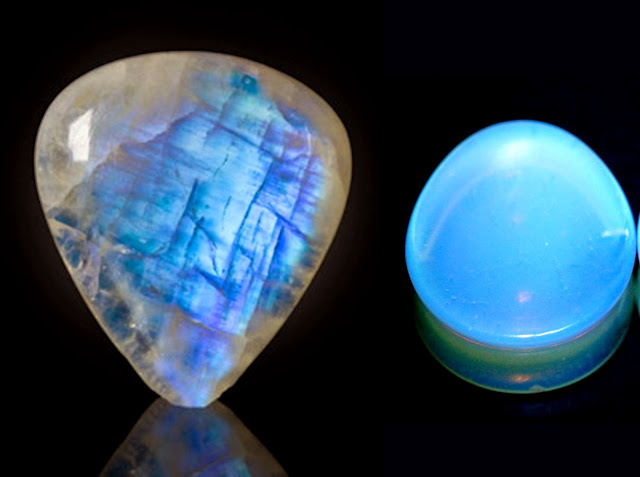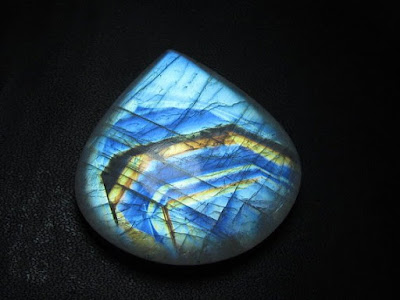What Is the Difference Between Moonstone and Opalite?
 |
| Moonstone left and Opalite on the right. Photo: InVogueJewelry |
It’s really pretty easy to tell if something is Opalite—which is just glass, and not a gemstone—or if it’s Moonstone.
Moonstone is a sodium potassium aluminium silicate, with the chemical formula AlSi₃O₈ . The most common moonstone is of the mineral adularia, named for an early mining site near Mt. Adular in Switzerland, now the town of St. Gotthard. The plagioclase feldspar oligoclase also produces moonstone specimens. Moonstone is feldspar with a pearly and opalescent schiller.
Moonstone is composed of two feldspar species, orthoclase and albite. The two species are intermingled. Then, as the newly formed mineral cools, the intergrowth of orthoclase and albite separates into stacked, alternating layers.
 |
| Rainbow Moonstone |
Rainbow Moonstone is actually not moonstone, but is a variety of Labradorite. It also has adularescence in a variety of colors—blues, pinks, yellows, purples, greens, reds—-hence the name.
Opalite is a man-made variety of glass. It’s NOT a gemstone, not opal or moonstone or quartz, but is just a very pretty glass and its trade name is Opalite. It is also used to promote impure varieties of variously colored common opal.
Opalite is sometimes called the Tiffany Stone or Bertrandite. Inside of opalite a range of colours may be visible – from certain angles, different colours are visible too. Against direct light it tends to look orange. You can read through Opalite, because it is translucent. It is generally flawless, but may sometimes contain air bubbles, an after effect of the forming process.
Read also:
A Gemstone with a Spectacular Flash of Iridescent Colors!
What is Adularescence?
How Do Asterism Minerals Form?